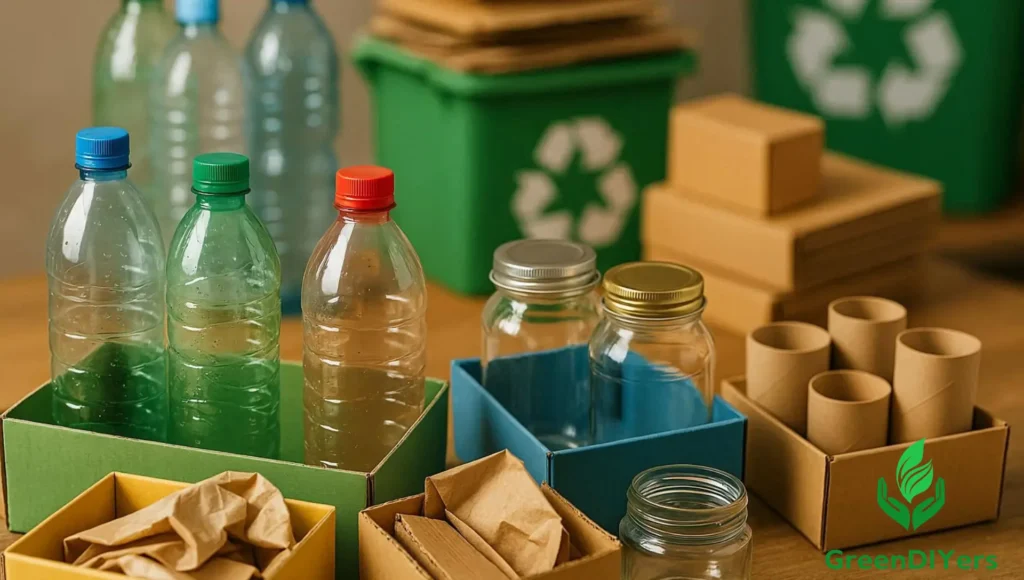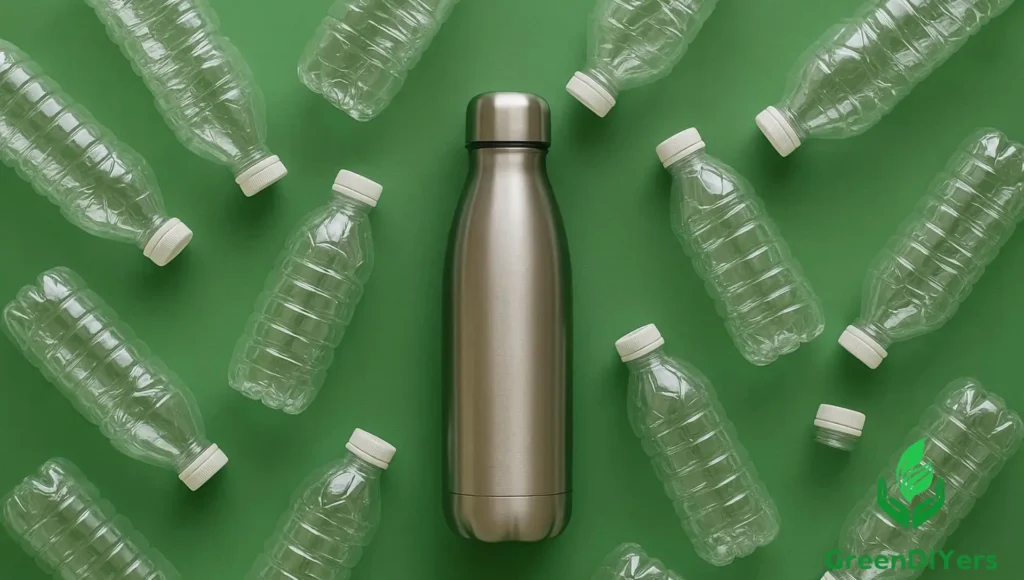Picture this: you’ve just unwrapped your latest online purchase, and you’re staring at a mountain of white foam packaging. Sound familiar? If you’ve ever wondered, “can you recycle styrofoam,” you’re not alone. Millions of people face this dilemma daily, holding those lightweight white chunks and wondering where they belong.
Here’s the straight answer: No, you typically cannot recycle styrofoam through standard curbside recycling programs. But before you toss it in the trash, there’s much more to this story.
The complexity lies in what we call “styrofoam,” the specialized equipment needed to process it, and the economic challenges that make recycling it nearly impossible through conventional methods. This guide will walk you through everything you need to know about styrofoam recycling, proper disposal methods, and sustainable alternatives that can help you make more environmentally conscious choices.
Table of Contents
Understanding Styrofoam: What Exactly Is It?
The Great Misnomer: “Styrofoam” vs. Expanded Polystyrene (EPS)
Here’s something that might surprise you: what most people call “styrofoam” isn’t actually Styrofoam at all. True Styrofoam™ is a trademarked brand name owned by Dow Chemical, referring specifically to their blue and pink extruded polystyrene (XPS) foam used primarily for building insulation.
That white foam packaging protecting your electronics? Those takeout containers from your favorite restaurant? That’s actually Expanded Polystyrene (EPS) foam – a completely different material with its own unique recycling challenges.
Types of Polystyrene (Plastic #6)
When you see the recycling symbol with the number 6, you’re looking at polystyrene. But not all polystyrene is created equal:
EPS (Expanded Polystyrene) is the lightweight, porous foam we encounter most often. It’s used for packaging, disposable cups, food containers, and protective padding. Its structure is mostly air – about 95% air and only 5% plastic – which creates the primary challenge for recycling.
XPS (Extruded Polystyrene) is denser with a closed-cell structure, primarily used for insulation in construction. This is the actual Styrofoam™ brand product.
HIPS (High Impact Polystyrene) is solid and brittle, found in yogurt cups, CD cases, and disposable cutlery. This type is sometimes more readily accepted by specialized recycling facilities.
The key takeaway? When asking “can you recycle styrofoam,” we’re primarily talking about EPS foam due to its widespread use and unique recycling obstacles.

The Core Challenges of Recycling Styrofoam (EPS)
Understanding why EPS recycling is so problematic helps explain your limited options and guides better decision-making.
Low Density, High Volume Problem
EPS is essentially air held together by a small amount of plastic. This creates a massive logistical nightmare for recycling facilities. Imagine trying to collect, store, and transport something that’s 95% air – it’s economically unfeasible for most recycling centers. A truckload of EPS contains very little actual recyclable material, making transportation costs prohibitive.
Contamination Issues
Food residue, grease, dirt, and adhesive labels make EPS extremely difficult to clean for recycling purposes. Unlike rigid plastics that can be easily washed, EPS’s porous structure absorbs contaminants deep into the material. The extensive cleaning required often costs more than the recycled material is worth.
Specialized Equipment Requirements
Standard Material Recovery Facilities (MRFs) lack the specialized compactors or densifiers needed to process EPS effectively. These machines can compress EPS into dense blocks, making transportation economical, but they represent a significant investment that most facilities haven’t made due to limited demand.
Limited Market Demand
Even when EPS can be recycled, there’s limited demand for the recycled material. Unlike other plastics with robust end-markets, recycled EPS has fewer applications, creating less economic incentive for recycling programs.
The Cost-Value Equation
The bottom line is simple: processing costs almost always exceed the value of recycled EPS. This economic reality drives most recycling facilities’ decisions to exclude EPS from their accepted materials list.

So, What Can You Actually Do?
Don’t despair! While curbside recycling isn’t an option, you have several alternatives for dealing with EPS responsibly.
Check Local Recycling Programs FIRST
Before assuming you’re out of options, always check your local recycling guidelines. Search online for “[Your City] foam recycling” or visit your municipality’s website directly. Some areas have special programs or partnerships with facilities that accept EPS.
Use national recycling locator tools like Earth911 in the US, which can help you find specialized drop-off locations near you. What’s accepted varies dramatically by location, so this step is crucial.
Dedicated Drop-Off Centers & Special Events
Some facilities do accept clean EPS, including:
- Certain plastics manufacturing companies
- Large retailers (particularly those selling electronics)
- Community recycling centers with specialized equipment
- Household hazardous waste collection events
The key word here is “clean.” Food containers must be completely free of residue, and packaging should have labels removed. Always call ahead to confirm current acceptance policies – these can change frequently.
Mail-Back Programs
Some companies offer mail-back recycling programs where you can send clean EPS directly to recyclers or manufacturers. Electronics retailers sometimes accept their own packaging materials through these programs. While not widely available, it’s worth researching for large quantities of clean EPS.
Reuse It! Creative & Practical Solutions
Before disposal, consider reuse options:
As Packing Material: Save clean foam pieces for your own shipments. They’re excellent protective padding for fragile items.
Crafts & School Projects: EPS is perfect for art projects, model making, and educational activities. Many teachers appreciate donations of clean foam pieces.
Garden Drainage: Clean foam chunks work well as drainage material in the bottom of large planters, though ensure it won’t come into contact with food plants.
Insulation Projects: Shredded EPS can serve as stuffing for pet beds or small-scale insulation projects around the home.
Proper Disposal (When All Else Fails)
If no recycling or reuse option exists in your area, EPS belongs in your regular trash bin. While not ideal environmentally, proper disposal in the waste stream is better than littering or contaminating other recycling streams.
In landfills, EPS is relatively inert and won’t break down quickly, but it also won’t release harmful chemicals into groundwater like some other materials might.

Sustainable Alternatives to Styrofoam
The most effective approach to the EPS problem is avoiding it altogether. Here are excellent alternatives across different applications:
For Packaging
Modern packaging alternatives include:
- Mushroom packaging: Made from mycelium (mushroom roots), this material is completely compostable
- Cornstarch peanuts: Dissolve in water and are compostable
- Recycled cardboard: Molded pulp inserts provide excellent protection
- Natural materials: Shredded paper, excelsior (wood wool), or kraft paper
- Air pillows: Made from recycled content and easily recyclable
For Food Service
Restaurants and consumers can choose:
- Compostable containers: Made from bagasse (sugarcane fiber), bamboo, or plant-based plastics
- Reusable containers: Bring-your-own programs or durable food storage
- Paper-based alternatives: Often recyclable or compostable options
For Construction Insulation
Building projects can use:
- Mineral wool, fiberglass, or cellulose insulation
- Polyisocyanurate or rock wool alternatives
- These materials often offer better performance than EPS anyway
The message is clear: choosing alternatives to EPS from the start is your most impactful environmental choice.
The Future of Styrofoam Recycling & Policy
Technological Advancements
Emerging technologies offer hope for better EPS recycling:
Chemical recycling methods can break EPS down to its original monomers, creating new plastic without quality degradation. While still developing, this technology could revolutionize polystyrene recycling.
Advanced densification technologies are making transportation more economical, potentially expanding recycling programs to more communities.
Legislative Changes
Policy changes are accelerating:
- Many cities and states are banning EPS foodware entirely
- Extended Producer Responsibility (EPR) laws are making manufacturers responsible for end-of-life recycling costs
- International agreements are addressing single-use plastics, including EPS
Circular Economy Integration
These technological and policy advances aim to create a circular economy where materials like EPS can be continuously reused rather than disposed of after single use.
Empowering Your Choices for a Greener Future
So, can you recycle styrofoam? The answer remains complex, but you’re now equipped with the knowledge to make informed decisions. Remember these key points:
- Always verify your local recycling guidelines first
- Prioritize reducing and reusing before disposal
- Choose sustainable alternatives whenever possible
- Clean EPS thoroughly if recycling options exist in your area
Your individual choices matter. By understanding the challenges of EPS recycling and making conscious alternatives when possible, you’re contributing to a more sustainable future. Share this knowledge with friends and family – the more people understand these issues, the greater our collective impact.
Every time you choose a compostable container over EPS, select packaging-free products, or properly dispose of unavoidable foam, you’re making a difference. The path forward isn’t always simple, but it’s always worth taking.
Remember: Recycling guidelines and available programs change frequently. Always check with your local waste management authority for the most current information in your area.



